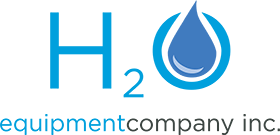 Indoor air is up to 500% more polluted than outdoor air. In part because our homes are so insulated and air tight that we keep the so-called fresh air out. In fact, the EPA has ranked indoor air quality as one of the top 5 environmental health risks.
Indoor air is up to 500% more polluted than outdoor air. In part because our homes are so insulated and air tight that we keep the so-called fresh air out. In fact, the EPA has ranked indoor air quality as one of the top 5 environmental health risks.
So before you learn what to buy, find out what you should be concerned about. There are three air pollutant categories: Particles, VOC’s (volatile organic compounds) and Biological Pollutants (microorganisms)
- Particles – are actually both solid and liquid airborne particles from pets, humans, carpets, etc., that we breathe. We sneeze or cough out the big particles. The smaller ones, usually less than 10 microns, get trapped in our lungs. The ultra fine particles are so small that they can pass through the lungs and enter our blood stream. Particle pollution has been linked to heart attacks, stroke, asthma, coughing, wheezing, diminished lung capacity and respiratory ailment, among other things.
- Volatile Organic Compounds, or VOC’s – are emitted as gases and include chemicals, usually from thousands of household products such as carpets, furniture, cleaning supplies, and cosmetics, in your home. Health effects can include burning, itchy eyes, nose and throat, headache and nausea, difficulty breathing, mucus filled sinuses, lung cancer and possibly death.
- Biological Pollutants – are or were living things. They include fungi, mold, mildew, bacteria, viruses, pollen, animal dander, cockroach parts, dust mites, dust mite and cockroach feces, and human skin. Aside from being just gross, they can cause sickness and disease.
The four most common types of air cleaning technologies are: Ultra Violet Light, Electrostatic Precipitators (Like the Ionic Breeze), Ozone, and HEPA filtration.
- Ultra Violet Light only works for microorganisms but unfortunately, it does not work consistently. The UV bulb becomes easily coated, the exposure and contact time is not intense enough or consistent enough, all resulting in poor effectiveness.
- The Electrostatic Precipitators work well, in theory, but they also get quickly coated and it just doesn’t move enough air through the system. On top of that, they are very loud.
- Ozone can be effective but the ozone itself can be hazardous to your health. In fact, some states have banned the residential use of ozone.
- HEPA filtration is commonly used and can be effective at removing particles and VOC’s. The downside, and this is a big one, is that they are not effective at killing the biological pollutants. In fact, the carbon that is used in HEPA filters, frequently become a hot bed of biological growth causing it to release harmful bacteria into the air. Plus, due to the dense filters, the air flow through the filters is slow and they are very noisy.
Now what? Great news. Healthway, a leading manufacturer in advanced air purification systems, has developed a brand new military grade technology called DFS or Disinfecting Filtration System. It is an FDA listed Class II Medical Device that effectively removes particles, VOC’s AND biological pollutants. This is a significant advancement in air quality improvement. The technology was originally made for the military, but they now offer a portable air purifier for residential use.
